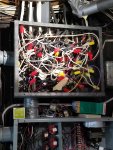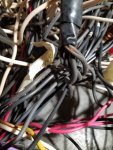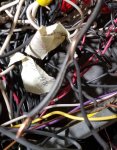Fred B
Senior Member
- Location
- Upstate, NY
- Occupation
- Electrician
Actually mostly just moving switches as walls are changing, the prints are not calling for added lighting but is eliminating some. One thing did find today was a lot of switched half receptacles. Metering seems to indicate MWBC on a lot of the controlled circuits. Not sure how that will work out with AFCI.@Fred B One other thing to stay mindful of is the rating of the contactors as you add lights, if you keep the existing system but just modify the switches, which it sounds like you will be doing.
Do have question given most of the changes are just with the low voltage spdt switches, will that trigger the need for addition of an AFCI into the controlled circuit (line voltage side)? Also, what effect would be had if I have to change out a faulty contactor?






